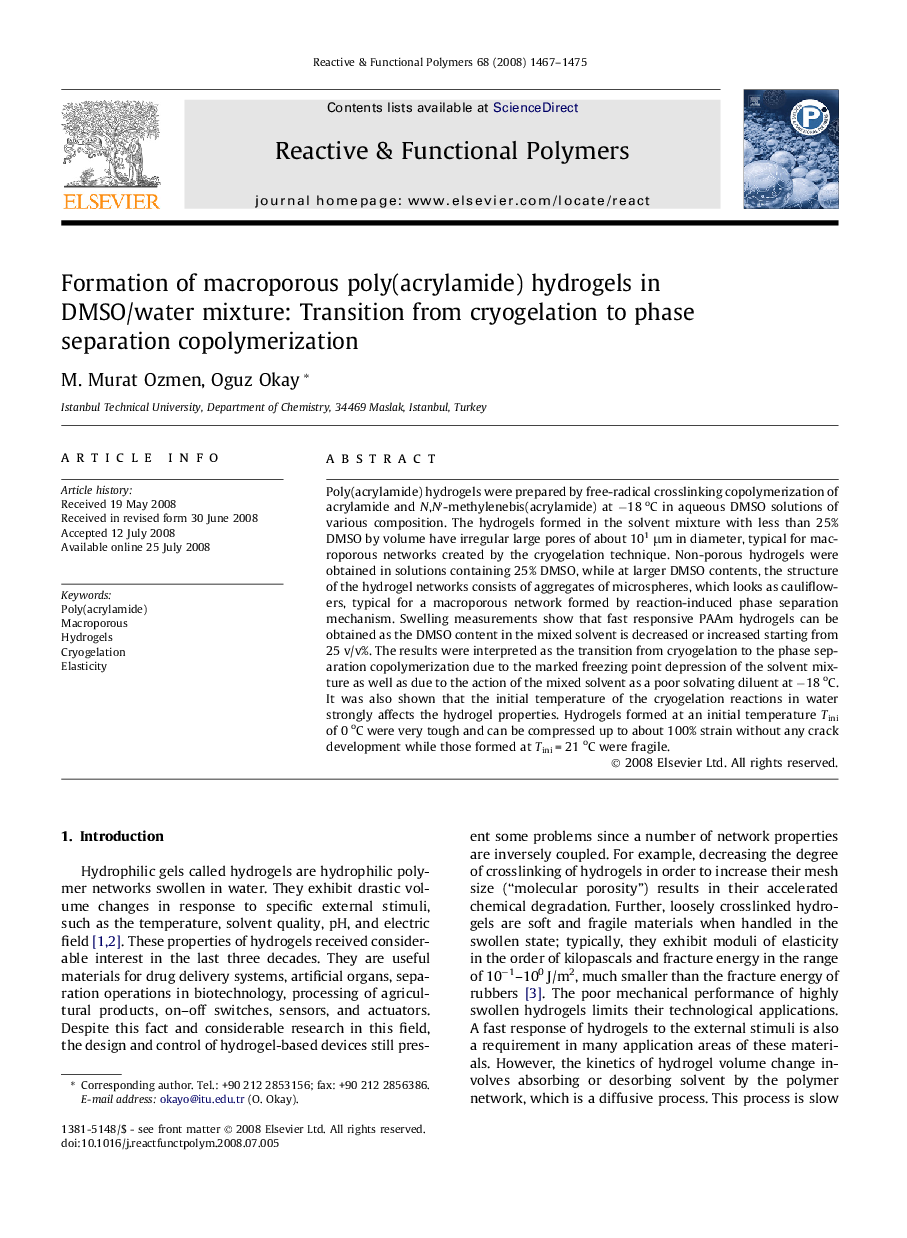| Article ID | Journal | Published Year | Pages | File Type |
|---|---|---|---|---|
| 5211406 | Reactive and Functional Polymers | 2008 | 9 Pages |
Poly(acrylamide) hydrogels were prepared by free-radical crosslinking copolymerization of acrylamide and N,Nâ²-methylenebis(acrylamide) at â18 oC in aqueous DMSO solutions of various composition. The hydrogels formed in the solvent mixture with less than 25% DMSO by volume have irregular large pores of about 101 μm in diameter, typical for macroporous networks created by the cryogelation technique. Non-porous hydrogels were obtained in solutions containing 25% DMSO, while at larger DMSO contents, the structure of the hydrogel networks consists of aggregates of microspheres, which looks as cauliflowers, typical for a macroporous network formed by reaction-induced phase separation mechanism. Swelling measurements show that fast responsive PAAm hydrogels can be obtained as the DMSO content in the mixed solvent is decreased or increased starting from 25 v/v%. The results were interpreted as the transition from cryogelation to the phase separation copolymerization due to the marked freezing point depression of the solvent mixture as well as due to the action of the mixed solvent as a poor solvating diluent at â18 oC. It was also shown that the initial temperature of the cryogelation reactions in water strongly affects the hydrogel properties. Hydrogels formed at an initial temperature Tini of 0 oC were very tough and can be compressed up to about 100% strain without any crack development while those formed at Tini = 21 oC were fragile.
